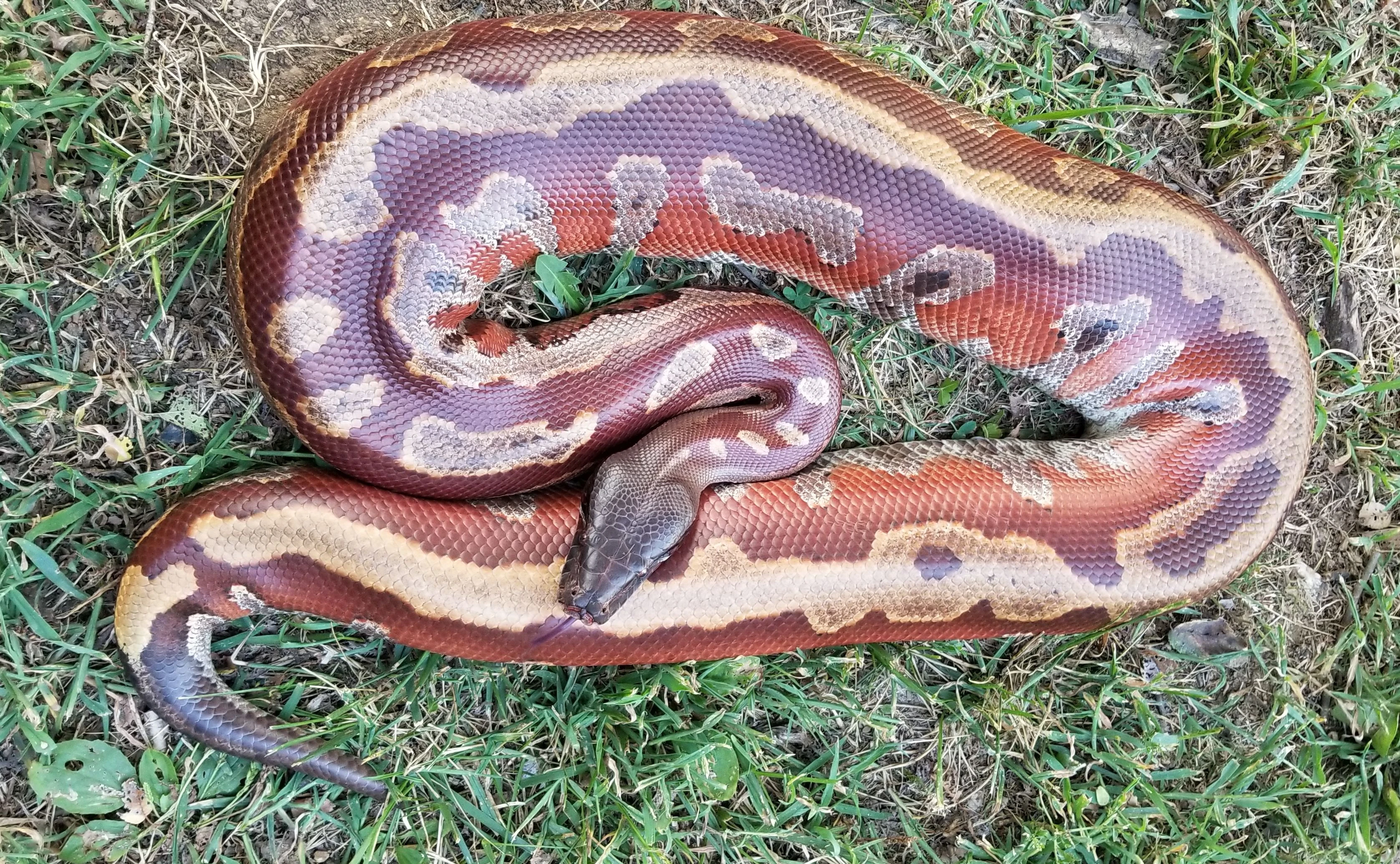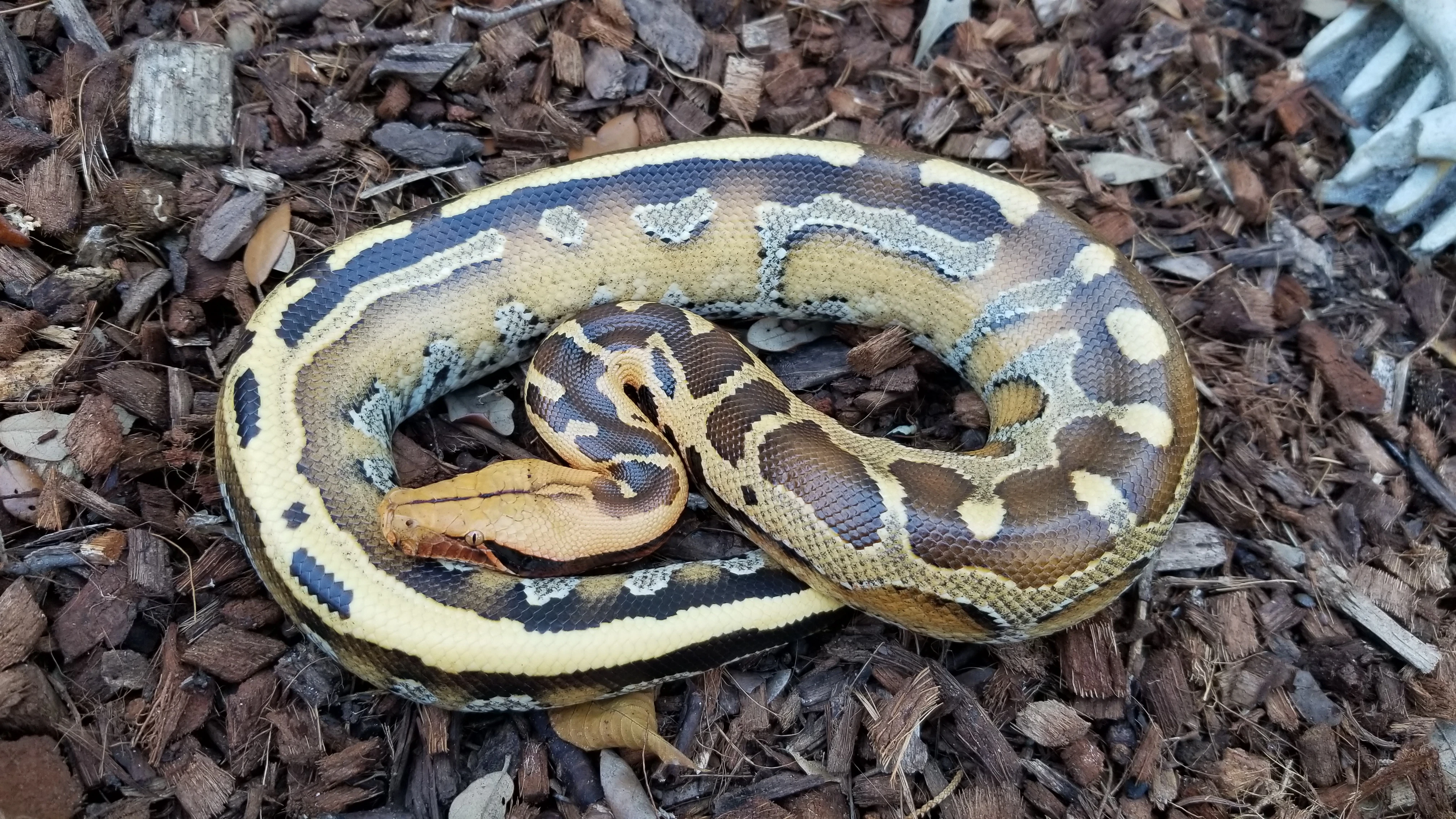
Blood & Short Tail Pythons
By: Randilyn Halvorsen

Big snake feel, small package
www.BioBoutiquekc.com - @BioBoutiquekc
The Blood and Short Tail Python complex:
- Blood Python (python brongersmai)
- Borneo Short Tail Python (python breitensteinii)
- Sumatran Short Tail Python (python curtus)
Natural History: Originating from tropical islands in Indonesia and Malaysia, each of these three species has its own natural color variation and unique features. Blood and short tail pythons live a terrestrial life near water sources, in burrows or swampy rice plantations, showing a preference for dark and cramped spaces. In recent years, they have grown in popularity as selectively bred color palettes and morphs become more available.
Lifespan: 20-25+ years
Average size: 4-6 feet long. Weighing in around 15-30 pounds, with males being slightly smaller than females.
Temperature: A heat gradient of 78 cool end and 83 warm end. It is imperative that short tail pythons be kept in this relative range. When they are too hot they are prone to becoming defensive, dehydrating quickly and going off food.
Heating: Under tank heating with a thermostat is preferred. Overhead heating is discouraged as short tail pythons like to hide and burrow away from light, overhead heating also dries the air.
Humidity: High- 75%+, a large water bowl and humidity holding substrate will help maintain proper levels. It is important to have adequate ventilation and air flow. Blood and Short tail pythons are prone to respiratory infections when exposed to stale over-wet conditions.
Enclosure: Blood and Short tail pythons prefer dark-sided enclosures with lots of hiding spaces to feel safe.
NO GLASS AQUARIUMS, PERIOD. As a hatchling, they need dark tubs (like a shoebox) for about the first year. Gradually move up in enclosure size as they grow, a big jump in enclosure size can stress a young animal. As an adult, a 4ft x 2ft x 2ft enclosure or larger will suffice. Lighting is not required but can be provided (not overhead heat, only light). They need a large water bowl that is refreshed at least twice a week. Substrate can be just about anything but they do like to burrow so keep that in mind. A cypress mulch or coco chip bedding will help maintain humidity. More hiding spaces, the better, these species are reclusive!
Feeding: Blood and Short tail pythons have crazy feeding responses when husbandry is on point. This group of snakes may be thick and wide-set but they are also prone to obesity. They have prominent backbones and it should be visible, if the backbone starts to disappear it is overweight.
- Diet is mainly rodents, with occasional chicks or quail for variety.
- Prefer eating at night.
- Under one year old: fed every 10-14 days
- Two - four years: fed every 2-3 weeks
- Adult: a single large rat every 3 weeks (or less often) is appropriate.
Bowel movements: It is normal for Blood and Short tail pythons to withhold defecating for several months. It's been noted they can have no bowel movement for up to a year. They do urinate A LOT; therefore a strict cleaning regime must be upheld!
Handling: Blood and Short tail pythons have a reputation for being moody but this belief is out of date and undeserved. They simply require respect and gentle cradling handling.
These species do not hold onto you like other snakes. They’re more like limp fish. Being terrestrial, they are afraid of falling and will freak out or thrash if they don’t feel secure or get frightened. It’s important to go slow and support their entire bodies when handling. It would be preferable to socialize with bloods and short tails in your lap on a couch, give them solid ground and avoid hovering over them. Blood and short tail pythons are intelligent but need to establish trust with their keepers. Nothing is much more impressive than a mature, full size, well socialized blood or short tail python.
Tap training: Blood and Short tail pythons can have a hard fast food response. To avoid being the target of this, it is important to always approach the snake with caution. We don’t know if they’re asleep, calm or ready to eat. It is suggested that a snake hook (or other object) be used to gently tap the snake when first approaching. Once the snake is aware of you, use the snake hook to move their face in the opposite direction of you. Then, reach in and grab the mid-section of the body and begin to lift them out. They are smart and instantly drop out of food mode when tap trained. Youtube has many good videos on this method.
The Three Species
Blood python, python brongersmai

Borneo Short Tail Python, python breitensteinii

Sumatran Short Tail Pthon, python curtus


